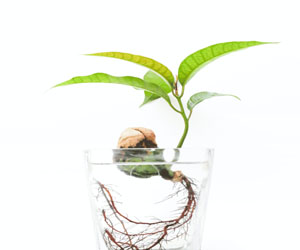


Maximize Your Space And Minimize Clutter

In today's world, where living spaces can be limited, space-saving ideas have become a valuable resource for making the most of your home. Whether you reside in a small apartment, a cozy house, or just want to declutter and free up space, these creative solutions can help you optimize your living environment. In this article, we'll explore a range of space-saving ideas that can make a significant difference in your home.
1. Multi-Functional Furniture
One of the most versatile space-saving ideas is to invest in multi-functional furniture. Pieces like sofa beds, fold-out desks, and coffee tables with storage can maximize your living area while providing convenience and comfort.
2. Wall-Mounted Shelves And Storage
Utilize vertical space by installing wall-mounted shelves and storage units. These not only provide additional storage but also free up floor space, making your room feel more open and less cluttered.
3. Under-Bed Storage
Your bed can be more than just a place to sleep. Consider using the space underneath for storage. Under-bed drawers or bins are excellent for storing clothing, shoes, and other items you don't use daily.
4. Compact Kitchen Appliances
In a small kitchen, compact appliances can save valuable counter and cabinet space. Look for smaller refrigerators, slim dishwashers, and mini appliances that fit your needs without dominating your kitchen.
5. Fold-Down Tables
Fold-down tables are perfect for small dining areas or home offices. They can be easily stowed away when not in use, creating more room for everyday activities.
6. Pegboards And Hooks
Pegboards and hooks can be a game-changer for organizing and storing items like kitchen utensils, tools, or office supplies. These space-saving solutions keep your essentials within arm's reach without cluttering up drawers or countertops.
7. Magnetic Strips
In the kitchen, magnetic strips mounted on the wall can hold knives and metal spice containers, saving counter and drawer space. They're not only functional but also add a unique design element to your kitchen.
8. Over-The-Door Storage
Maximize closet and bathroom space by adding over-the-door organizers. These handy storage solutions can hold shoes, accessories, cleaning supplies, and more, making efficient use of often underutilized space.
9. Furniture With Hidden Storage
Furniture with hidden compartments is a clever way to keep your belongings organized while reducing visual clutter. Consider sofas, ottomans, and beds with built-in storage to keep your space tidy and inviting.
10. Slide-Out Pantry
If your kitchen lacks storage space, consider a slide-out pantry. These slim cabinets can fit into tight spaces and provide a surprising amount of storage for canned goods, spices, and other kitchen essentials.
11. Nesting Tables
Nesting tables are an excellent space-saving idea for occasional use. When not in use, smaller tables can be tucked away under larger ones, allowing you to expand your tabletop space as needed.
12. Mobile Furniture
Mobile furniture, like rolling carts and trolleys, can be easily moved around your home. These versatile pieces can serve as portable bars, kitchen islands, or additional storage units, adapting to your changing needs.
Space-saving ideas are essential for making the most of your living space, whether it's a small apartment, a compact house, or a room in need of decluttering. By incorporating these creative solutions, you can maximize the functionality of your home, minimize clutter, and create a more comfortable and inviting living environment.
Maximizing Comfort In Minimal Space
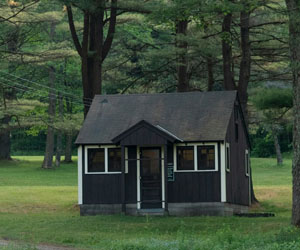 2. Multifunctional Furniture
2. Multifunctional Furniture
Tiny living demands furniture that pulls double duty. Invest in pieces that serve multiple functions, such as a sofa that can convert into a bed, a coffee table with storage, or a dining table that can fold away when not in use. These furniture items are crucial for maximizing space and utility.
3. Vertical Storage
Utilizing vertical space is key to organized tiny living. Install wall-mounted shelves, hooks, and pegs to keep items off the floor and create a sense of height. Vertical storage helps you keep your tiny home clutter-free while adding a touch of design flair.
4. Custom Storage Solutions
Tiny homes often require custom storage solutions. Consider hiring a professional or using DIY skills to create storage systems that fit your unique space. Custom cabinets, built-in shelving, and under-stair storage can make the most of every nook and cranny.
5. Clear Containers And Labels
Clear storage containers are your best friends in a tiny home. They allow you to see what's inside without having to open each container, making it easy to find what you need. Use labels to further organize your belongings, making your tiny space efficient and user-friendly.
6. Downsizing Your Wardrobe
In a tiny home, you'll need to downsize your wardrobe. Consider a capsule wardrobe with versatile, mix-and-match pieces. Rotate your clothing with the seasons to save space and keep your closet uncluttered.
7. Kitchen Efficiency
Tiny home kitchens require special attention. Invest in compact appliances, use wall-mounted storage for pots and pans, and opt for space-saving utensils and cookware. Staying organized in the kitchen is essential for making the most of your limited space.

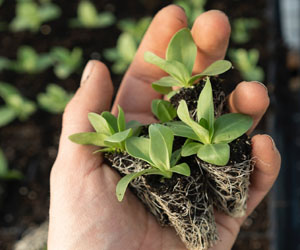
Cultivating Your Green Thumb
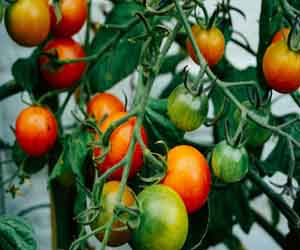 Start Small: For beginners, it's often best to start with a small garden area. This can be a corner of your backyard, a few pots on your balcony, or even a sunny windowsill. Beginning with a small space allows you to learn the basics without feeling overwhelmed.
Start Small: For beginners, it's often best to start with a small garden area. This can be a corner of your backyard, a few pots on your balcony, or even a sunny windowsill. Beginning with a small space allows you to learn the basics without feeling overwhelmed.
Choose The Right Location: select a location that receives adequate sunlight for the plants you want to grow. Most vegetables and flowers require at least 6 hours of direct sunlight per day. If you have limited sun exposure, consider shade-tolerant plants like hostas or ferns.
Select Easy-To-Grow Plants: As a beginner, it's wise to start with plants that are known for their resilience and forgiving nature. Some easy-to-grow choices include tomatoes, basil, marigolds, and zinnias. These plants are relatively low-maintenance and can be quite forgiving of minor mistakes.
Quality Soil Is Key: Healthy soil is the foundation of a successful garden. Invest in good-quality potting mix or amend your garden soil with organic matter like compost to improve its fertility and structure.
Learn About Watering: Overwatering and underwatering are common mistakes for beginners. Research the specific watering needs of your plants. Most plants prefer even, consistent moisture, but some drought-tolerant varieties may require less frequent watering.
Gardening Tools: Acquire a few essential gardening tools, including a trowel, hand pruners, a watering can or hose, and gardening gloves. These tools will make your gardening tasks much easier.
Garden Maintenance: Regular garden maintenance includes weeding, deadheading (removing spent flowers), and pruning. These tasks help keep your garden looking tidy and encourage healthy growth.
A Clean Home And A Clean Conscience
 Environmental Impact: Traditional cleaning products can contain hazardous chemicals that, when washed down the drain, enter water systems and harm aquatic life. Green cleaning helps reduce water pollution and the environmental impact of your cleaning routine.
Environmental Impact: Traditional cleaning products can contain hazardous chemicals that, when washed down the drain, enter water systems and harm aquatic life. Green cleaning helps reduce water pollution and the environmental impact of your cleaning routine.
Reducing Plastic Waste: Many green cleaning products come in recyclable or refillable containers, reducing plastic waste and contributing to a healthier planet.
Sustainability: By opting for sustainable cleaning practices, you contribute to a more eco-friendly world and encourage the development of environmentally responsible products.
How To Get Started With Green Cleaning
Assess Your Current Cleaning Products: Start by taking a look at the cleaning products you use. Identify which ones contain harsh chemicals and consider replacing them with greener alternatives.
Make Your Own Cleaning Solutions: Many effective cleaning solutions can be made using simple ingredients found in your pantry. For example, a mixture of vinegar and water can be a powerful all-purpose cleaner.
Read Labels: When purchasing cleaning products, read labels carefully. Look for certifications like "EcoLogo" or "Green Seal" to ensure that the product meets environmental and health standards.
Choose Reusable Cleaning Tools: Opt for reusable cleaning tools like microfiber cloths and mop heads to reduce waste.
Reduce, Reuse, Recycle: Use cleaning products and containers that are recyclable or refillable. This minimizes your environmental footprint.
Exploring Soil-Based Farming
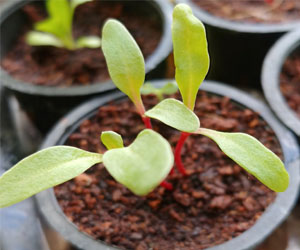 The Essence Of Soil-Based Farming
The Essence Of Soil-Based Farming
Soil-based farming is the conventional practice of growing crops and raising animals directly in the natural ground, without the use of hydroponics, aquaponics, or other soilless methods. It relies on the fertility and nutrient content of the soil to support plant growth, and it has been the cornerstone of human agriculture since the dawn of civilization.
The Natural Nutrient Cycle
Soil-based farming taps into the natural nutrient cycle of the Earth. Organic matter, decaying plants, and animal waste enrich the soil with essential nutrients such as nitrogen, phosphorus, and potassium. These nutrients are absorbed by plants, providing the foundation for growth. Soil acts as a reservoir, storing water and nutrients, which are gradually released to plants as they need them. This natural cycle fosters a self-sustaining and ecologically friendly agricultural system.
Advantages Of Soil-Based Farming
Nutrient-Rich Soil: Over time, well-managed soil-based systems accumulate organic matter and nutrients, enhancing soil fertility.
Crop Diversity: Soil-based farming supports a wide range of crop varieties, catering to diverse dietary needs and regional preferences.
The Fruits Of Gardener's Labor
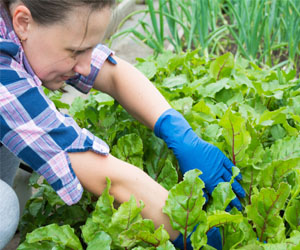 Connection To Nature
Connection To Nature
Gardening is a harmonious dance with nature. Abundant harvests illustrate the beautiful partnership between the gardener and the Earth. Tending to the soil, choosing the right seeds or saplings, watering, and protecting your plants from pests and disease — all these efforts are rewarded by the Earth's generous bounty. The cycles of life in your garden, from planting to harvesting, mirror the larger cycles of nature, and they remind us of our place in the natural world.
Self-Sufficiency And Sustainability
Abundant harvests also represent a move toward self-sufficiency and sustainability. Growing your own food not only reduces your reliance on commercial agriculture but also ensures that you have a fresh and healthy food source right at your doorstep. It empowers individuals and families to take control of their food supply and make environmentally conscious choices. When you produce your food, you reduce the carbon footprint associated with transportation and packaging.
Health And Nutrition
The fruits of abundant harvests are some of the healthiest foods you can consume. Homegrown produce is free from harmful chemicals and pesticides, offering unparalleled freshness and nutrition. These vegetables and fruits are picked at their peak ripeness, preserving their vitamins, minerals, and flavors. When you have an abundant harvest, you have an abundance of wholesome, nutrient-rich foods at your disposal.
Sharing The Bounty
Abundant harvests often lead to an abundance that extends beyond your own household. Gardeners frequently find themselves with more produce than they can personally consume. This surplus can be shared with friends, family, and the community. Sharing the fruits of your labor is a deeply satisfying experience that strengthens bonds and fosters a sense of community.
Building Sustainable Communities For A Better Future
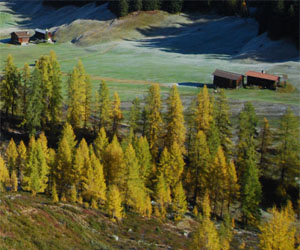
Principles Of Eco-Villages:
Sustainability: Eco-villages are built on principles of sustainability. This encompasses eco-friendly housing, renewable energy sources, and a focus on reducing waste and energy consumption. Sustainable farming and food production are also key elements, with many eco-villages aiming to be self-sufficient in terms of food.
Low Environmental Impact: These communities strive to have a minimal impact on the environment. This often means eco-friendly construction, waste reduction and recycling, sustainable water management, and the use of renewable energy sources like solar panels or wind turbines.
Community And Connection: A strong sense of community is a hallmark of eco-villages. Residents often engage in decision-making processes together and foster a culture of shared responsibility. This sense of connection promotes social well-being and harmony.
Education And Learning: Many eco-villages emphasize learning and education, particularly in the areas of sustainability and eco-conscious practices. Workshops, seminars, and communal learning opportunities are common.
Cultural And Artistic Expression: Creativity and cultural expression often flourish in these communities, with residents embracing arts, music, and cultural activities that promote a sense of belonging and fulfillment.
Benefits Of Eco-Villages:
Environmental Stewardship: Eco-villages are on the forefront of environmental stewardship. By living in a sustainable, low-impact manner, residents reduce their ecological footprints and serve as models for sustainable living for the broader community.